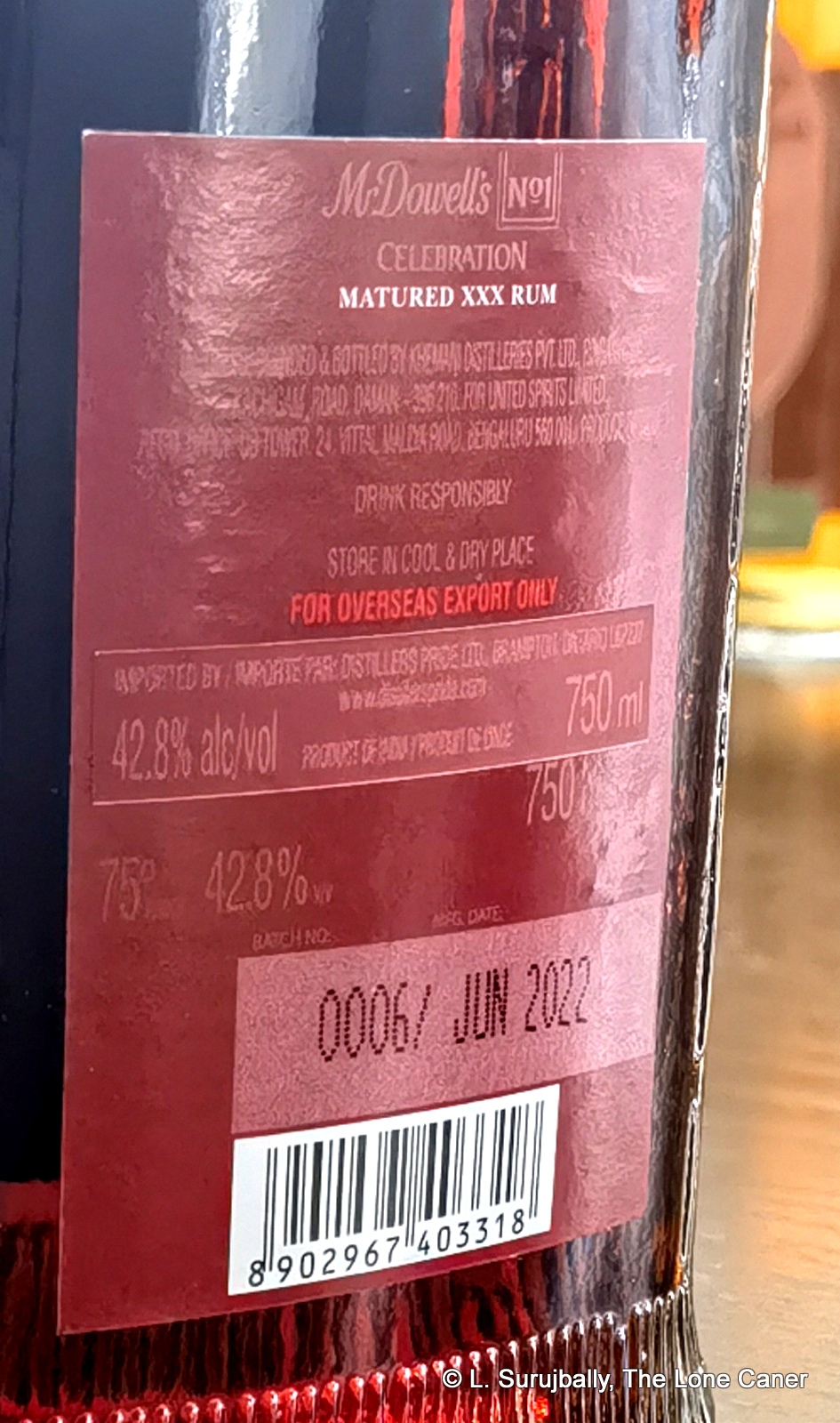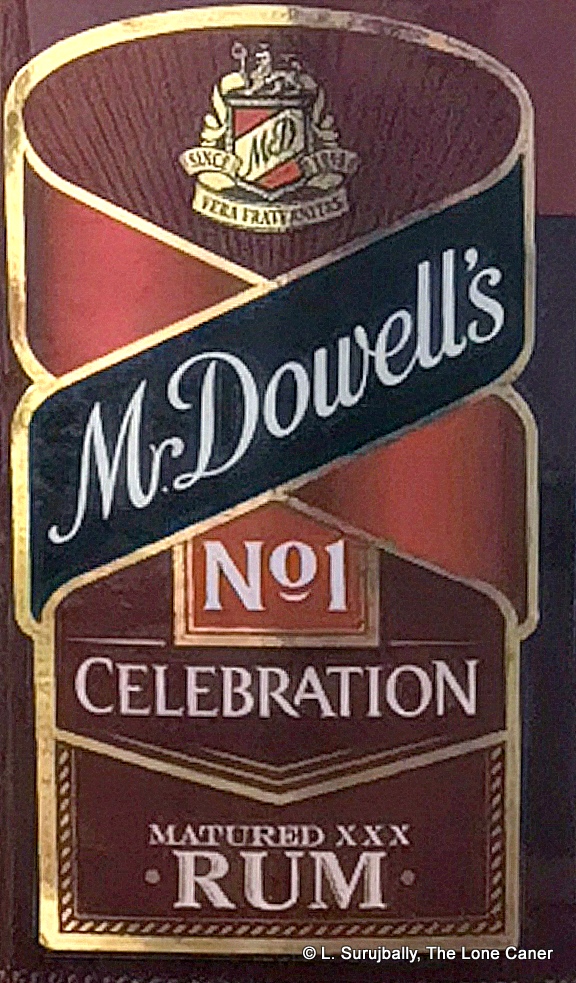Background
In the various reviews of the rums made by Old Monk, Camikara, Makazai, Amrut and Rhea, the observation was made (several times) that Indian rums don’t really have that good a reputation outside their country of origin, especially recently with the move towards greater transparency and purity. The rums there just never really go critical outside the diaspora and are viewed in many quarters inside and outside India as (at best) second tier also-rans.
There are several reasons for this. For one, In India itself rum has always been seen as a commoners’ drink, not a premium one, with all the snobbery this implies (it’s no accident that Amrut supercharged its whiskies’ reputation by first making them reputable outside India). Secondly, the financial incentives are minimal when the companies that make these products have what amounts to a near captive market of many hundreds of millions of local drinkers – why would they export when they can make easier money selling in-country? And thirdly lack of awareness and lack of perceived quality go hand in hand with a dearth of information about how the rums are made – few companies give out any kind of information about that aspect of things (although colourful origin stories are legion).
Yet the country cannot be ignored forever. Companies like Piccadilly, Mohan Meakin, Amrut and United Spirits (owned by Diageo) are global sellers and massive conglomerates, irrespective of what they make. And so it behooves us to know more about the rums they make, be they ever so humble. This is one of them.
Although “humble” may not be the exact word to use for McDowell’s No.1 “Celebration”, the flagship rum made by United Spirits (of which Diageo owns a controlling stake). The rum, first introduced in 1990, is one of only a few made by the company – the others are a white rum called “Caribbean,” a Gold called “Cariba”, and an aged “Old Cask” about which little is known except it was first released in 2004. There are likely others – we just don’t see them very much. But the Celebration is touted as the top selling rum in the world and I’ve seen news articles that proclaim the millions of cases it sells annually, so certainly it’s an elephant among field mice, and does brisk business.
That said, there’s the usual annoying paucity of production details. We know it’s made from molasses, though some dispute this and suggest jaggery may be the true source material. My understanding is that for such mass-market rums, a multi-column still uses molasses to get to 95% ABV or so, and then it’s aged, coloured and blended. What it’s blended with is a subject of some debate – it’s been said that “real” spirits are added, spices, flavourings, take your pick – the lack of disclosure is a common feature in the country were a bottle of this stuff can retail for under two bucks. Also, McDowell’s has 36 manufacturing centres across India and a score or so distilleries, so where exactly it’s made is unclear – Chip Dykstra, in a 2011 review, said it was made in Goa, without attribution. And it’s released at 42.8%, which, as I noted before, is a standard in India and equates to 75 degrees proof in the old Imperial system, which was never quite abandoned.
Even with the slightly-over-living-room-strength, it’s thin pickings on the nose. It smells vague, even indeterminate, first of plastic and detergent, and then of warm caramel drizzled over vanilla ice cream. A few fruits – cherries, ripe red grapes, tangerines – disturb the flow, but after a few minutes it’s paint on new drywall, plasticine, and the scent of a well oiled leather couch that’s old enough to leak some stuffing. It is, in short, a very weird smelling rum and one can only wonder how it beat out Old Monk, which is somewhat more “traditional” in its aromas.
Anyway, on tasting it, that thin profile persists – it’s as scrawny as a hungry cur in a dark alley. Yet some flavours make it through, and this is where we can detect some spices: cardamom, vanilla, salted caramel are the predominating notes; there’s damp tobacco and black tea, a touch of brine (no olives), and not a whole lot of fruitiness, crisp or tart or otherwise. There is some sweetness to it, but not a lot (and a hydrometer tests it as clean), and it goes down easily enough, just without any sort of flavours to excite the palate. Even the finish displays that sort of lacklustre “it’s okay” kind of vibe – short, easy, unaggressive, lots of caramel and vanilla and a few spices to round off the dram.
Reading the notes above, you can see why — even if it is the top selling rum in the world — it is met in the west with a shrug and a meh (if not outright disdain). One must concede that it’s a rum made originally for the indigenous market, where a different mindset exists on how it should be made, or taste like — and where those tastes are considered desirable; those who adhere to its unthreatening, easy charms won’t worry too much about disclosure or distillation or additives. Myself I just wish they would tell us – I mean, my God, we’re almost in 2025, dammit, why does this continually have to something we have to beg for?
Summing up this overlong piece, let’s just say that yes, it’s a reasonable rum, sure it is, just not one that rings the bells and makes for happy “wow!” moments and high fives. You can sip it easily enough and it tastes decent enough, if somewhat different than the norm. It simply lacks what one lady I know tartly refers to as “seriousness.” It’s all promises and no follow through, resting its dandified laurels on the bartop, while resolutely refusing to pony up when the bill comes due. If this rum was her boyfriend, she’d tolerate it for a while, and dump him the following week.
(#1100)(79/100) ⭐⭐⭐
Other notes
- Video Recap is here.
- There’s a sticker on my bottle that said it was made in June 2022.
 Company Bio (summarized from a longer work in progress)
Company Bio (summarized from a longer work in progress)
McDowell’s has its origins way back in 1826 when Angus McDowell founded the firm in what was then called Madras (now Chennai). Initially the company didn’t make anything, just imported liquor, tobacco products, and various other consumer goods into India for the expatriate British population. It was clearly successful enough to form itself into a Limited company in 1898 and continued trading until after Independence – however, in 1951 Vittal Mallya of United Breweries Group bought the company and named the combined entity United Spirits Limited.
The first distillery was built in Kerala in 1959 and initially USL made spirits under contract. By 1963 they were confident enough to launch their own brandy (called “Golden Grape”) and slowly expanded their capacity by buying other spirits making companies, while also building new distilleries and distribution networks. However, so far as I can tell, rum was never a branded product in the portfolio identified with USL – what was produced stayed with the acquired companies’ already established brands.
The next generation of the family began to become active in 1973 when Vijay Mallya became a director of McDowell’s (as the subsidiary continued to be called – there was no opprobrium attached to the company name as had attended Dyer Meakin, so no reason, apparently, to change it), and ten years later he took over the whole company as chairman. The Celebration branded line of rums came out during his tenure and their distribution had expanded to the point where by the 2010s they had not only exceeded Old Monk’s sales, but had actually overtaken Bacardi as well.
Cash flow problems and declining sales (as well as some poor business decisions and scandals) in the early 2010s eventually forced Vijay Mallya to sell a majority stake in the Group to Diageo, and that’s the situation today.

